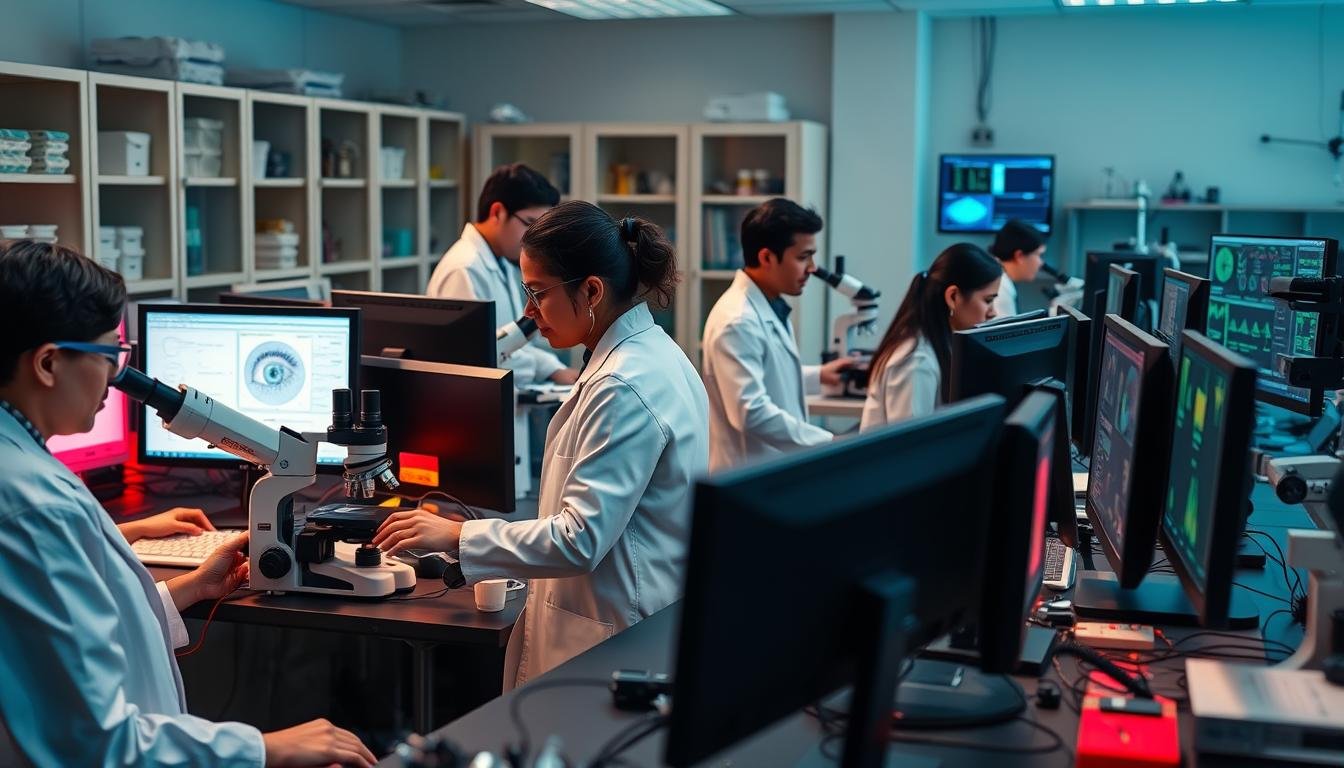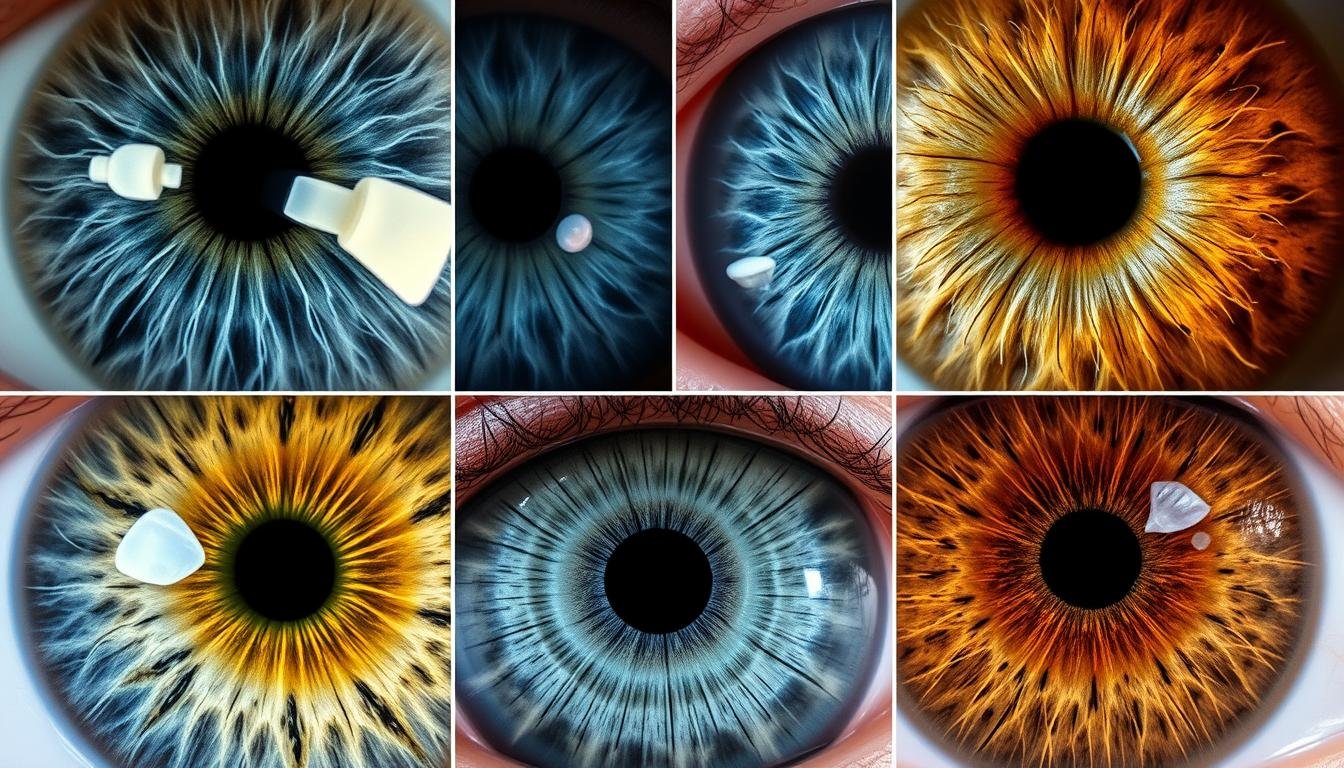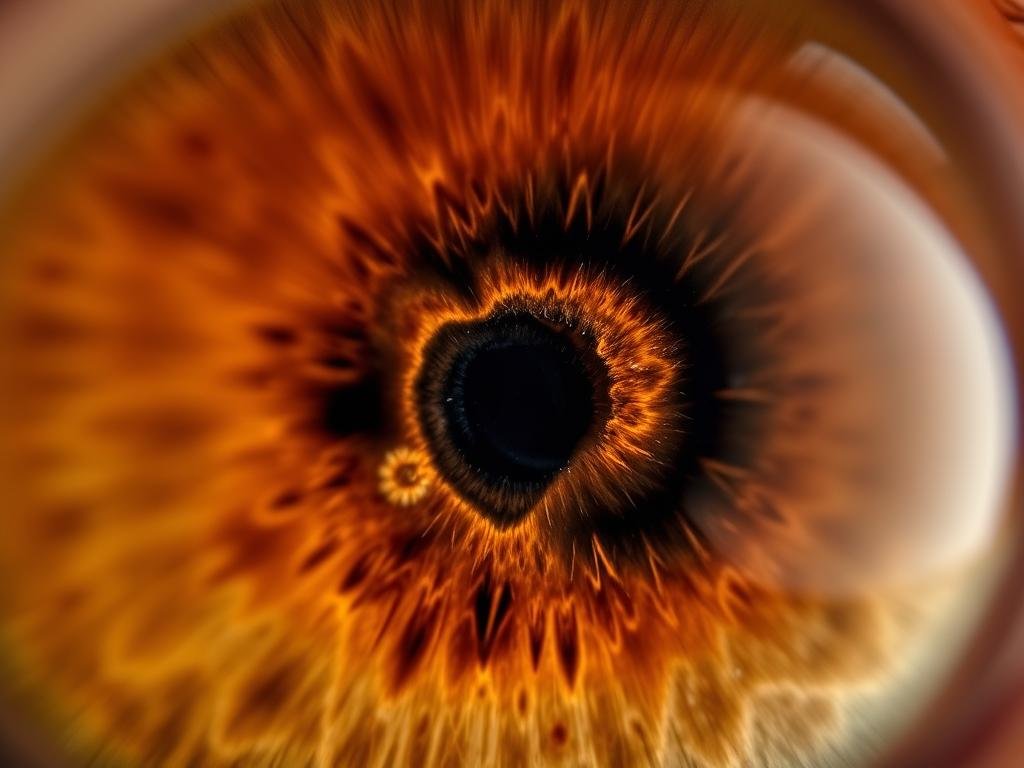In today’s health-conscious world, many individuals are exploring alternative diagnostic methods alongside conventional medicine. Diagnóstico da IRIS de iridologia has gained attention as a non-invasive approach to health assessment, claiming to detect potential health issues through examination of the iris. This growing interest reflects a broader trend toward holistic health practices that complement traditional medical checkups. This article explores both approaches, their methodologies, strengths, limitations, and how they might work together in a comprehensive health strategy.
What Is Diagnóstico da IRIS de iridologia?

Diagnóstico da IRIS de iridologia is an alternative medicine technique that analyzes patterns, colors, and other characteristics of the iris (the colored part of the eye) to gather information about a person’s overall health. Practitioners of this method, known as iridologists, use specialized charts that divide the iris into multiple zones, each corresponding to different organs and systems within the body.
Historical Development of Diagnóstico da IRIS de iridologia
The roots of iridology can be traced back thousands of years, with evidence of eye examination for health assessment dating to ancient Egypt, China, and India. However, modern Diagnóstico da IRIS de iridologia is largely attributed to Ignatz von Peczely, a Hungarian physician from the 19th century. According to popular accounts, von Peczely noticed changes in an owl’s iris after the bird suffered a broken leg, which inspired his further research into the connection between iris markings and physical conditions.
Another significant contributor was Nils Liljequist from Sweden, who observed changes in his own iris after taking medications containing iodine and quinine. These observations led him to create an atlas in 1893 that contained 258 black and white illustrations and 12 color illustrations of the iris, establishing early foundations for Diagnóstico da IRIS de iridologia.
Principles and Methodology
Iridologists believe that the iris acts as a “mapa” of the body, with specific areas corresponding to different organs and systems. They examine the iris for various markers including:
- Variações de cores e mudanças de pigmentação
- Structural features and patterns
- Dark spots or discolorations
- White rings or marks
- Tissue changes and irregular architecture
Using specialized equipment such as magnifying glasses, cameras, or slit-lamp microscopes, iridologists examine these features and compare them to iridology charts. These charts typically divide the iris into 60-90 zones, with each zone linked to specific body parts. For example, the zone corresponding to the kidney might be located in the lower portion of the iris.

Iridologist performing an iris examination using specialized equipment
How Traditional Medical Checkups Work
Traditional medical checkups rely on established scientific methodologies and technologies that have evolved through centuries of medical research and practice. Unlike Diagnóstico da IRIS de iridologia, these methods are widely accepted within the medical community and form the foundation of modern healthcare systems worldwide.
Core Components of Traditional Diagnostics

Physician conducting a comprehensive medical examination
Standard medical checkups typically include multiple diagnostic approaches:
Physical Examination
- Vital signs measurement (blood pressure, heart rate, temperature)
- Visual inspection of body parts
- Palpation of organs and tissues
- Auscultation using stethoscopes
- Neurological assessments
Laboratory Testing
- Blood tests (complete blood count, metabolic panels)
- Urinalysis
- Hormone level testing
- Cholesterol and lipid profiles
- Specific disease markers
Advanced Diagnostic Imaging
When necessary, physicians may order imaging studies that provide detailed views of internal structures:
- X-rays for bone and some tissue visualization
- Ultrasound for soft tissue examination
- CT (Computed Tomography) scans for detailed cross-sectional images
- MRI (Magnetic Resonance Imaging) for high-resolution tissue imaging
- PET (Positron Emission Tomography) scans for metabolic activity
These diagnostic tools provide objective, measurable data that can be interpreted according to established medical parameters and compared against population norms or previous results from the same patient.

Advanced medical laboratory where diagnostic tests are processed
Pros and Cons of Diagnóstico da IRIS de iridologia
Understanding the advantages and limitations of Diagnóstico da IRIS de iridologia compared to traditional medical approaches can help individuals make informed decisions about their health assessment options.
Potential Advantages
- Non-invasive examination process
- No pain or discomfort during assessment
- Holistic approach considering the entire body
- May detect imbalances before symptoms appear
- No exposure to radiation or chemicals
- Generally lower cost than comprehensive medical testing
Limitations and Concerns
- Lacks scientific validation in controlled studies
- Não reconhecido por estabelecimentos médicos convencionais
- Cannot provide definitive disease diagnosis
- Results may vary significantly between practitioners
- Risk of delayed proper medical treatment
- Potential for false positives or negatives
| Factor |
Diagnóstico da IRIS de iridologia |
Traditional Medical Checkups |
| Cost |
Generally $50-200 per session |
Varies widely; potentially thousands with comprehensive testing |
| Invasiveness |
Non-invasive |
Ranges from non-invasive to invasive procedures |
| Validação científica |
Limited; not supported by controlled studies |
Extensive peer-reviewed research and clinical trials |
| Diagnostic Specificity |
General indications of potential issues |
Can identify specific conditions with measurable parameters |
| Tempo necessário |
Typically 30-60 minutes per session |
From brief visits to multiple appointments plus testing time |
Explore Holistic Health Options
Interested in learning more about complementary approaches to health assessment? Our experts can help you understand how different diagnostic methods might work together for your wellness journey.
Schedule a Consultation
Case Studies: Diagnóstico da IRIS de iridologia in Practice
While scientific validation of Diagnóstico da IRIS de iridologia remains limited, proponents often share case examples to illustrate its application. The following hypothetical cases represent how iridologists might approach different health situations.
Estudo de caso 1: Avaliação de Saúde Digestiva
A 42-year-old woman consulted an iridologist after experiencing intermittent digestive discomfort despite normal medical test results. The iridologist observed discolorations around the pupil in zones traditionally associated with the digestive system. Based on these observations, the practitioner suggested potential food sensitivities and recommended an elimination diet to identify triggers.
The client later discovered through conventional allergy testing that she had mild sensitivities to certain foods. While the iridology session didn’t provide a specific diagnosis, it directed attention to an area that benefited from further investigation.
Case Study 2: Liver Function Indicators
A 55-year-old man with a history of alcohol consumption sought an iridology assessment as part of a holistic health review. The iridologist noted brown spots in the liver area of the iris, suggesting potential liver stress according to iridology principles. The practitioner recommended liver-supportive herbs and lifestyle modifications.
The client subsequently consulted his physician, who ordered liver function tests that revealed slightly elevated enzymes indicating early liver strain. While the medical tests provided the definitive diagnosis, the iridology session had highlighted an area warranting medical attention.
These case examples highlight an important consideration: while Diagnóstico da IRIS de iridologia may sometimes align with conditions later confirmed through conventional testing, this correlation doesn’t necessarily validate the methodology. Such alignment could result from practitioners’ general health knowledge, coincidence, or the broad nature of many iridology interpretations.
Nota importante: These case studies are presented for illustrative purposes only and should not be interpreted as scientific evidence supporting iridology’s effectiveness. Always consult qualified healthcare providers for medical diagnosis and treatment.
When to Consider Diagnóstico da IRIS de iridologia Over Traditional Methods
While conventional medical diagnostics remain the gold standard for disease identification and treatment, some individuals may find value in exploring Diagnóstico da IRIS de iridologia in specific contexts. Understanding when this alternative approach might be appropriate can help make informed health decisions.

Collaborative approach to health assessment incorporating multiple perspectives
Potential Scenarios for Considering Diagnóstico da IRIS de iridologia
- Complementary Assessment: As an additional perspective alongside (never replacing) conventional medical care
- Wellness Exploration: For those interested in holistic approaches to general wellness
- Preventive Health Interest: For individuals focused on potential early warning signs before clinical symptoms develop
- Persistent Unexplained Symptoms: When conventional testing has not identified clear causes for ongoing symptoms
- Personal Health Empowerment: For those who wish to actively participate in diverse approaches to understanding their body
“The ideal approach to health assessment combines the precision and evidence-based nature of conventional medicine with the whole-person perspective that alternative methods strive to provide. Neither should be used exclusively at the expense of the other.”
– Integrative Health Perspective
Criticisms and Scientific Evidence
The scientific community has extensively examined Diagnóstico da IRIS de iridologia through controlled studies, with results that challenge its fundamental claims. Understanding these criticisms is essential for making informed decisions about its use.

Scientific research facilities where diagnostic methods undergo rigorous testing
Several key studies have failed to validate iridology’s diagnostic claims:
- A 1979 study published in the Journal of the American Medical Association found that iridologists could not detect kidney disease in patients when examining photographs of their irises
- A study in the British Medical Journal showed iridologists could not correctly identify patients with gallbladder disease by examining their irises
- A 2005 controlled study found iridology was ineffective in diagnosing common forms of cancer
- A comprehensive German study examining over 4,000 iris photographs concluded that iridology was not useful as a diagnostic tool
These studies highlight a fundamental issue: the iris does not appear to change significantly in response to disease in distant organs as iridology theory suggests. The iris’s structure develops during gestation and remains largely stable throughout life, with changes primarily related to pigmentation in early years or conditions directly affecting the eye itself, such as glaucoma.
Medical Consideration: Relying solely on Diagnóstico da IRIS de iridologia while delaying conventional medical care could potentially result in missed or delayed diagnosis of serious conditions. Always consult qualified healthcare providers for medical concerns.
Integrating Diagnóstico da IRIS de iridologia with Conventional Medicine
Despite the scientific limitations of Diagnóstico da IRIS de iridologia, some individuals find value in a complementary approach that incorporates multiple perspectives on health. A balanced integration prioritizes evidence-based medicine while allowing space for complementary insights.

Integrative health approach combining conventional and complementary methods
Principles for Responsible Integration
- Medical Primacy: Conventional medical diagnosis and treatment should always take precedence for disease identification and management
- Complementary Perspective: Diagnóstico da IRIS de iridologia might be explored as an additional, never replacement, perspective
- Open Communication: Always inform all healthcare providers about the different approaches you’re pursuing
- Critical Evaluation: Maintain healthy skepticism and evaluate all health recommendations based on evidence
- Safety First: Avoid delaying necessary medical care based on alternative assessments
Some integrative practitioners suggest that the value of Diagnóstico da IRIS de iridologia may lie less in its specific diagnostic claims and more in its holistic approach to health assessment. The detailed attention to the individual and consideration of whole-body interconnections can sometimes highlight areas warranting further investigation through conventional means.
Discover Balanced Health Assessment Options
Looking for an approach that respects both conventional medicine and complementary perspectives? Our integrative health specialists can help you navigate the options.
Reserve sua consulta hoje
Frequently Asked Questions About Diagnóstico da IRIS de iridologia
Is Diagnóstico da IRIS de iridologia scientifically proven?
No, Diagnóstico da IRIS de iridologia has not been validated by rigorous scientific research. Multiple controlled studies have failed to demonstrate that iridologists can accurately detect disease through iris examination. The fundamental premise that the iris changes in response to disease in distant organs is not supported by current understanding of human physiology.
Can Diagnóstico da IRIS de iridologia replace blood tests or other medical diagnostics?
No, Diagnóstico da IRIS de iridologia should never replace conventional medical testing. Blood tests, imaging studies, and other medical diagnostics provide objective, measurable data that has been validated through extensive research. Iridology should only be considered as a complementary approach, if at all, and never as a substitute for proper medical care.
What qualifications should an iridologist have?
Unlike medical professionals, iridologists are not regulated by governmental agencies in most countries, including the United States and Canada. Various organizations offer certification courses, but these vary widely in content and rigor. If considering an iridology consultation, look for practitioners who also have formal healthcare training (such as naturopathic doctors who include iridology in their practice) and who work cooperatively with conventional medical providers.
What conditions do iridologists claim to detect?
Iridologists claim to detect various health conditions including inflammation, digestive issues, lymphatic problems, hormonal imbalances, and organ stress. Some also suggest they can identify nutritional deficiencies, toxin accumulation, and constitutional strengths and weaknesses. However, these claims have not been substantiated by scientific research.
How much does an Diagnóstico da IRIS de iridologia session typically cost?
The cost of an Diagnóstico da IRIS de iridologia session typically ranges from to 0, depending on the practitioner’s experience, location, and whether the session includes additional services such as nutritional counseling. Insurance rarely covers these services as they are considered alternative and not medically necessary.

Diverse human iris patterns and colors, each as unique as a fingerprint
Conclusion: Finding Balance in Health Assessment Approaches
The comparison between Diagnóstico da IRIS de iridologia and traditional medical checkups reveals fundamental differences in methodology, scientific validation, and practical application. While conventional medicine offers evidence-based diagnostics with proven reliability, some individuals are drawn to the holistic perspective that alternative approaches like iridology attempt to provide.
The most prudent approach to health assessment acknowledges the primacy of conventional medical care while remaining open to complementary perspectives that might contribute to a more comprehensive understanding of well-being. This balanced view prioritizes safety and efficacy while respecting individual preferences for diverse health approaches.
Whether you’re curious about Diagnóstico da IRIS de iridologia or firmly committed to conventional medicine, the ultimate goal remains the same: optimal health and well-being. By making informed decisions based on sound evidence and open communication with healthcare providers, you can navigate the complex landscape of health assessment options with confidence.
Take the Next Step in Your Health Journey
Interested in learning more about comprehensive health assessment options? Our team of health professionals can help you create a personalized approach that respects both science and holistic perspectives.
Request Your Personalized Consultation






















